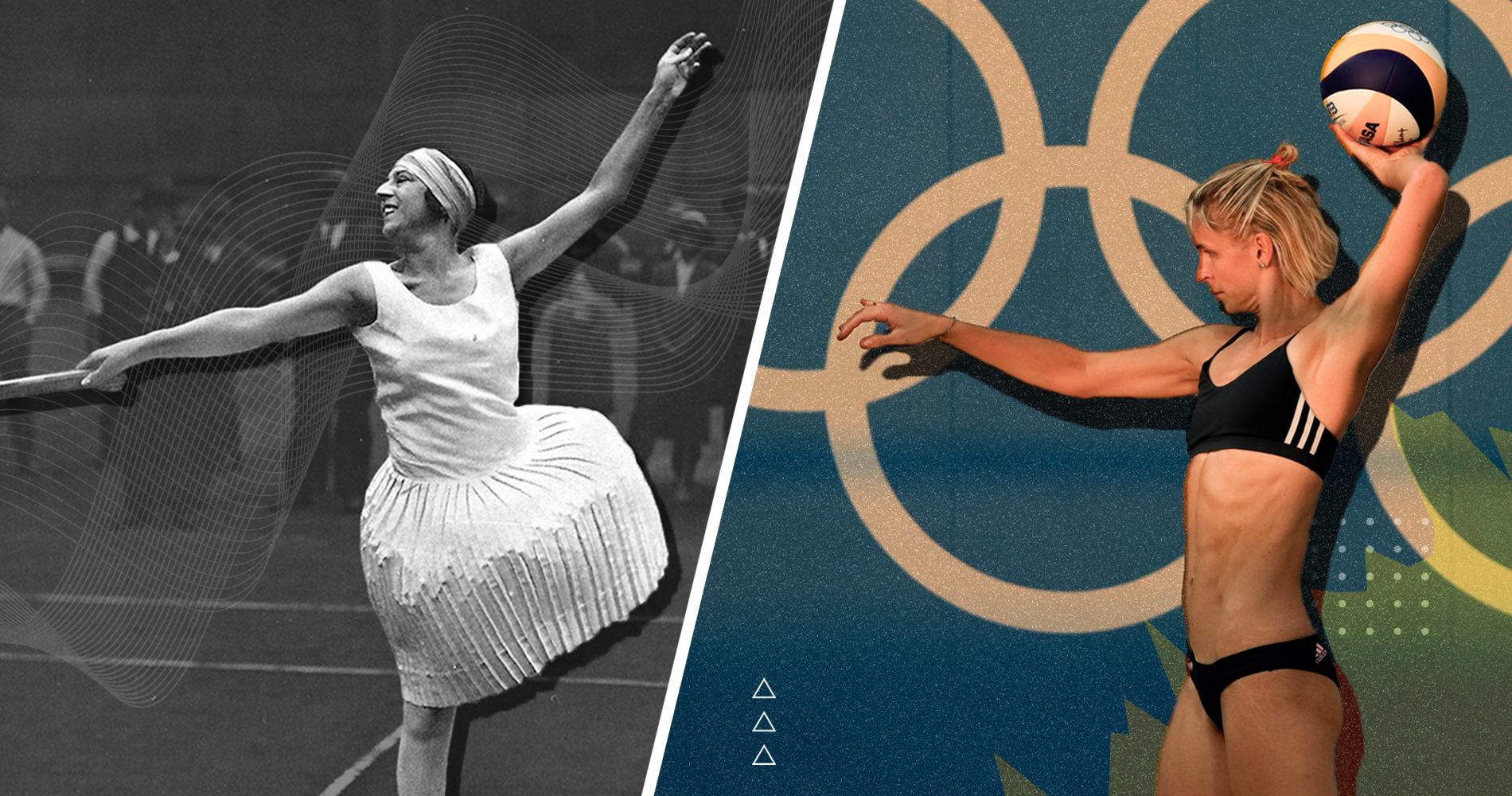Starting with the German gymnastics team’s “full-body” competition outfit, the movement against overly revealing outfits was mentioned enthusiastically at the Tokyo Olympics. However, not only at this Olympics, the outfits of female athletes have always been a matter of discussion in many previous competition events. For many years, sexualization in sports has been a chronic problem, and female athletes are the most affected group of victims.
Need to dress "revealingly" to attract men to watch sports?
Recently, during the European Championships, the Norwegian women's beach handball team received a fine of 1,500 EUR (more than 40 million VND) for "inappropriate clothing" - because the players wore shorts instead of the usual bikini uniform. Athlete Julie Aspelund Berg shared that her team knew they would be fined, but still decided not to wear bikinis because they were too short and could expose sensitive areas. "When we wear bikinis, we always have to pay attention to whether it is in the right position or not. We get distracted by that and that is really something no one wants. We just want to be treated equally as men."

Norway women's beach handball team
According to sports media researcher Mary Jo Kane, the fact that female athletes must wear bikinis with standards such as no longer than 10 cm, or must be cut diagonally to expose the hip bone... in the competition outfit list is the result of the ambition to attract more men to watch women's sports.
"Gender-neutral uniform policies may stem from the misconception that exposing and highlighting women's bodies will attract more spectators, and that sports will also become more 'palatable' to male spectators," Yahoo News quoted Mary Jo Kane's research.
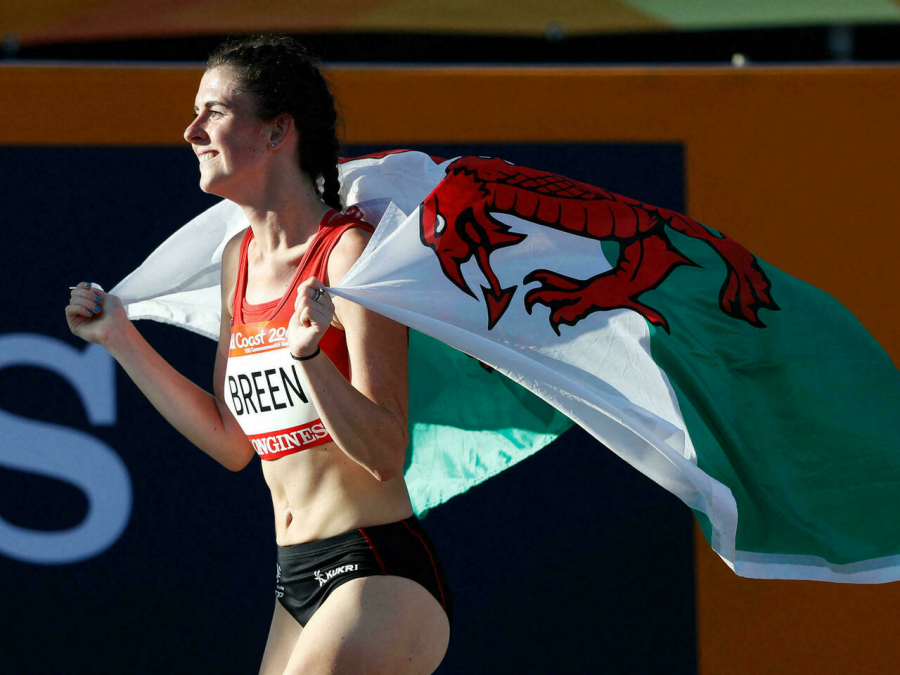
Olivia Breen, Paralympic champion
And clearly, with the aim of attracting the male gaze, those who set the rules for competition outfits (which are actually just bikinis or swimsuits, too short pants) have intentionally sexualized women who are trying to compete and make their name on the sports honor roll. At the same time, this also makes many people mistakenly believe that for women, appearance is as important as ability.
The outfit of the female athlete who once "worshipped" femininity
Women have long fought for the right to participate in sports and have their achievements recognized. The first modern Olympic Games took place in 1896, but women were not allowed to participate until 1900. Of the 997 athletes, only 22 were women, competing in five sports: tennis, rowing, badminton, horse riding, and golf. British tennis player Charlotte Cooper became the first woman in history to win an Olympic gold medal, and she did so wearing a long dress.
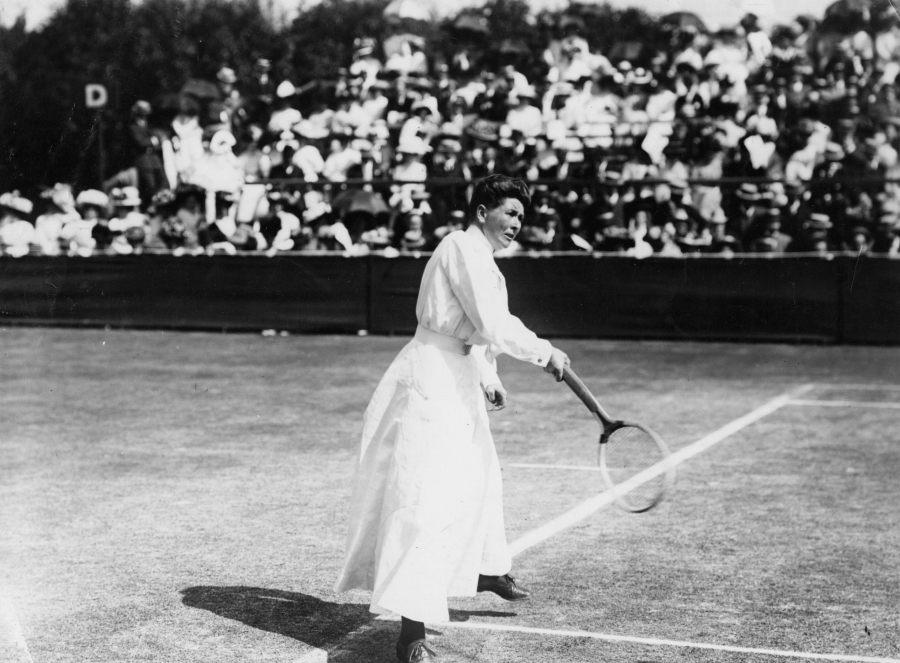
Charlotte Cooper wears a long dress to play tennis
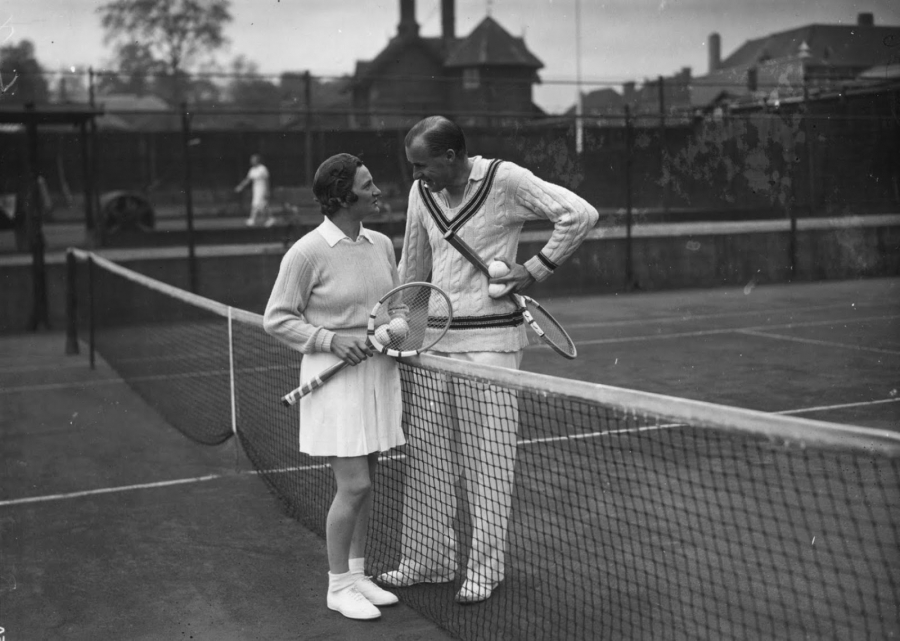
In the 19th century, women competing in court sports like tennis often wore corsets and loose skirts, which clearly restricted their mobility. Michelle Flemons, senior lecturer in sport education and youth development at St Mary’s University, said the “dress code” at the time “aimed at balancing femininity and sportsmanship.” Similarly, the International Badminton Federation announced that miniskirts would be mandatory for female athletes at the 2012 London Olympics. The council felt that female athletes should look “feminine” and in this case, a miniskirt would do the trick.

In the 19th century, the typical attire of female tennis players was a corset and a loose skirt.
Hilborne, CEO of Women in Sport, says that rules about what to wear in competition today “should be based on fairness,” and swimsuits are one example. In 2019, swimming’s international governing body, FINA, banned all polyurethane swimsuits. These were considered “legal doping” at the time, as they allowed swimmers to shorten their races by minimizing drag. This caused a huge controversy after a series of world records were set by athletes wearing them.
Barriers from Racial Differences
Rules, regulations and media commentary surrounding athletes’ attire can sometimes fuel racism. This month, the International Swimming Federation (FINA) came under heavy criticism after UK-based brand Soul Cap announced that the aquatics governing body would refuse to approve caps designed for swimmers with natural black hair for international competitions, including the Olympics.
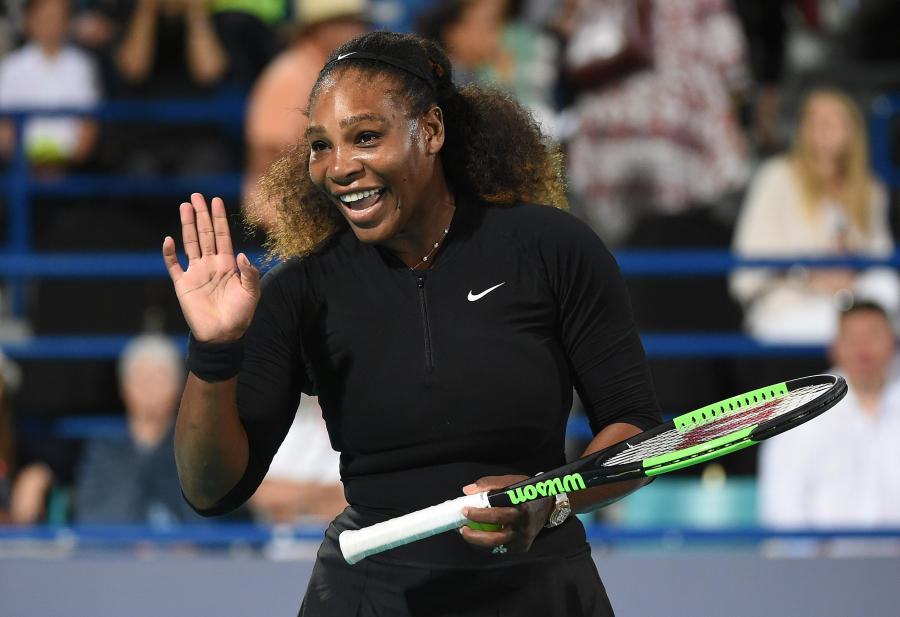
Black female athletes are often "judged a certain way."
“Sport is a microcosm of society and so in many ways it reflects the cultural attitudes, mores, ideologies; the racism, the sexism, the homophobia, the xenophobia that is really going on,” said Akilah Carter-Francique, Executive Director at the Institute for Sport, Society and Social Change. “We see it in the performance of athletes, in the rules or even in the games themselves.”
Fiona May, a retired track and field athlete, said black female athletes "are portrayed in a certain way, often judged as aggressive and their appearance is scrutinised very closely".
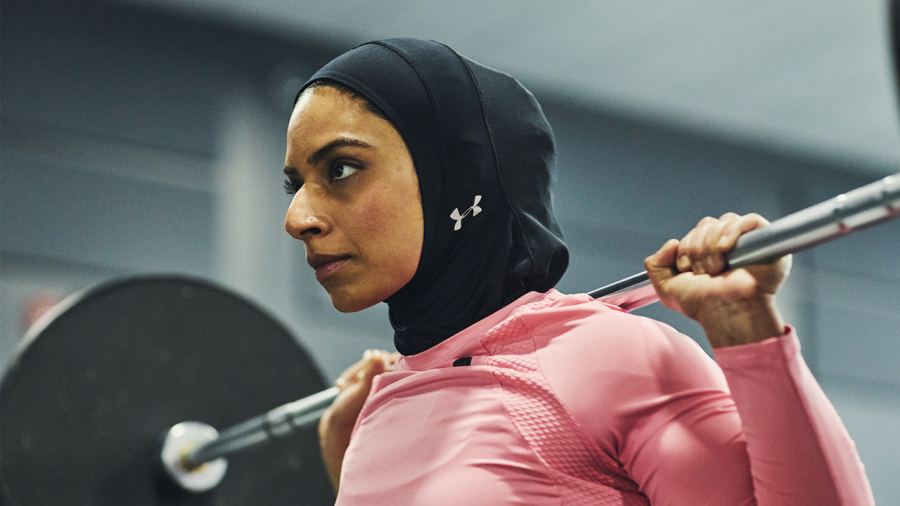
Muslim women have faced many barriers to participating in sports in the past.
Lipa Nessa, Commissioner of the Muslimah Sports Association, said Muslim women face many barriers to participating in sport. "When I started playing football, before 2014, I couldn't play because I wasn't allowed to wear a hijab," she said, noting that a large number of Muslim women were unable to play the sport due to the 2007 ban on wearing the hijab in competition by the world football governing body.
efforts to end sexualization and gender inequality
FIFA officially approved the wearing of religious headscarves by athletes in 2014. Nessa said it was encouraging to see major governing bodies step up to amend their rules, and many others have followed suit, with the International Basketball Federation (FIBA) also approving athletes to wear headscarves during matches in 2017.
In line with the feminist movement that has emerged in recent years, female athletes are also speaking out about women’s rights in sports. Recently, at the Olympics in Tokyo, the German women’s gymnastics team wore full-body uniforms instead of the usual bikini-cut style, to protest the sexualization of sports: “We want to show that women or anyone has the right to decide what they will wear.”
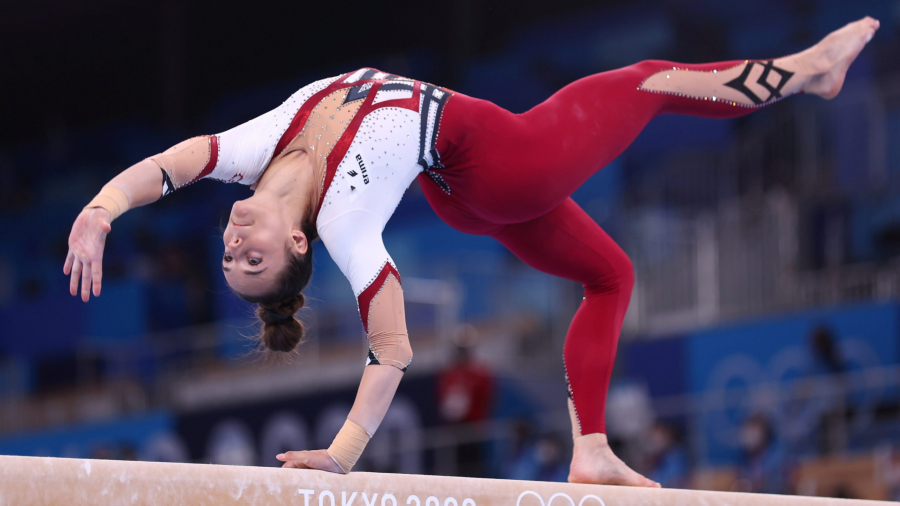
German women's gymnastics team wear full-body uniforms in protest against sexualization.
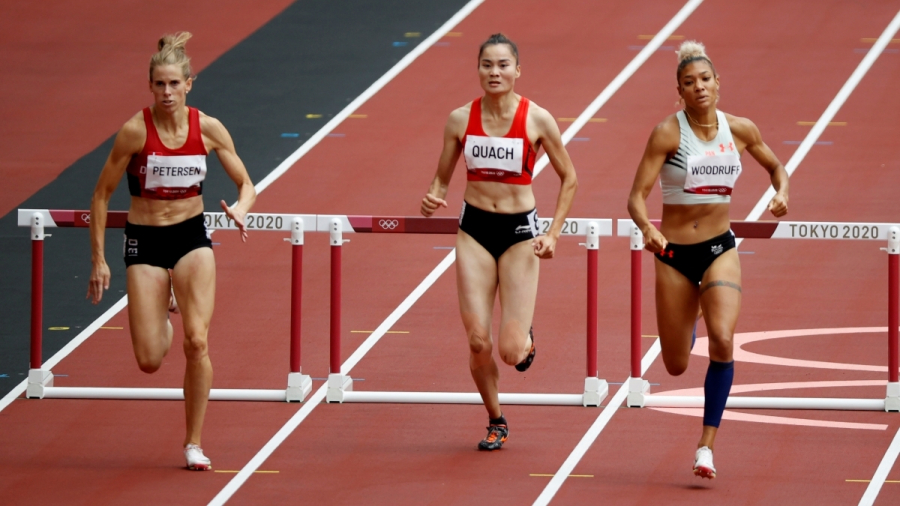
Improve camera angles of athletes
In addition, officials are working to push back against indecent comments about female athletes' bodies and outfits. The International Olympic Committee (IOC) has instructed broadcasters not to focus unnecessarily on athletes' appearance, such as makeup, hair, nails, clothing, or private body parts such as the bottom, low-cut, open back, etc.
The Olympic Broadcasting Service has also pledged to limit misleading or offensive shots during the filming of the competition. The first method proposed is to use more wide-angle and long-range shots, instead of focusing on the legs, thighs or breasts of female athletes, to make the Olympics truly "about sport, not gender".






